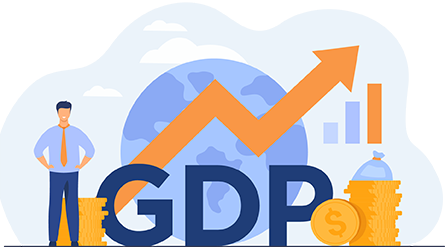Decision Science
Course Overview
Faculty :Dr. Sanjoli Jain
No. of Classes- 20 (90 Minutes each class)
Decision Science deals with the application of the statistical tools in the area of marketing , production, finance, research and development, manpower planning to extract relevant information for the purpose of decision making in the real world. This course covers application of two major domains of Statistics—Descriptive statistics and Inferential statistics .Descriptive Statistics make use of graphs, tables, charts and other statistical tools to make generalization or to describe a certain phenomenon. The application of Inferential statistics involves estimating and validating facts and figures for the purpose of decision making .All generalizations made by descriptive analysis may not be true , therefore inferential statistics is used to test the validity of generalizations made.
The course picks up the practical problems of businesses/firms and explores possible managerial solutions. It integrates Statistical theory with business practice for the purpose of facilitating planning and decision-making.

Course Learning Outcomes
At the end of the course, the students should be able to:-
- Apply the concepts and theories of statistics for business decision making
- Use data-based decisions to solve managerial problems

Learning Resources
There is no fixed text book prescribed for this course. The concepts and theories used in the course will have to be learnt from various sources, including you tube video, online learning platforms, and internet resources. Data will be obtained from various authentic sources and the same will be used for analysis and estimation using Excel, SPSS and Power BI.
However, students may like to consult following text books to enhance their knowledge of economic principles and their applications:
- STATISTICS FOR MANAGEMENT: by Levin Rubin Rastogi Siddiqui
- BUSINESS STATISTICS: by GC Beri
- BUSINESS STATISTICS: by JK Sharma
Student Responsibility
It is the responsibility of every student to be aware of the requirements for this course, and understand the specific details included in this document.It is emphasized that this course requires a significant commitment outside of formal class contact. The learning tasks in this course may include classes (lectures or seminars), required reading, the preparation of answers to set questions, exercises and problems, and self-study. It is advisable that student maintains a separate Note Book for this course which can be used for keeping class notes, library notes, and notes of other readings. It is important to develop the habit of writing notes of classroom discussions and any readings that the students come across.
Late Submission
Assessment tasks submitted after the due date, without prior approval/arrangement, will be not be accepted. Requests for extension of time must be made based on special circumstances and it will be the sole discretion of the instructor whether to provide the extension.
Plagiarism
Plagiarism is looked at as the presentation of the expressed thought or work of another person as though it is one's own without properly acknowledging that person. In case of plagiarism, marks will be deducted or put to zero. It is also advisable that students must not allow other students to copy their work and must take care to safeguard against this happening. In cases of copying, normally all students involved will be penalized equally; an exception will be if the student can demonstrate the work is their own and they took reasonable care to safeguard against copying.
Session Plan
Each session will be of 90 minutes. There will be a mix of theory and hand-on data based discussion. There will be practice sessions and exercises.
MANAGERIAL ECONOMICS
| Session No. | Topics |
|---|---|
| Class 1 | Introduction to Business Statistics |
| Class 2 | Same as above |
| Class 3 | Types of data and level of measurement |
| Class 4 | Same as above |
| Class 5 | Descriptive Statistics and Graphical representation |
| Class 6 | Same as above |
| Class 7 | Introduction to statistical software SPSS and Power BI |
| Class 8 | Same as above |
| Class 9 | Case Study 1 |
| Class10 | Measures Of Central Tendency (Mean Median Mode) |
| Class11 | Same as above |
| Class12 | Same as above |
| Class13 | Case study 2 |
| Class14 | Correlation |
| Class15 | Same as above |
| Class16 | Same as above |
| Class17 | Case Study 3 |
| Class18 | Statistical inference |
| Class19 | Same as above |
| Class20 | Hypothesis testing |
| Class21 | Same as above |
| Case 22 | Case Study 4 |
| Class23 | Regression Analysis |
| Class24 | Same as above |
| Class25 | Parametric and Non-Parametric tests |
| Class26 | Same as above |
| Class27 | Same as above |
| Class28 | Business Application and Presentation |
| Class29 | Same as above |
| Class30 | Same as above |
